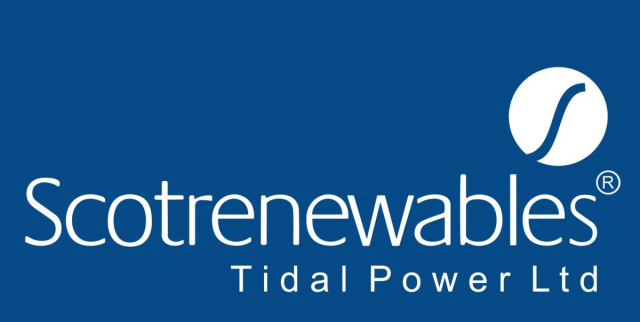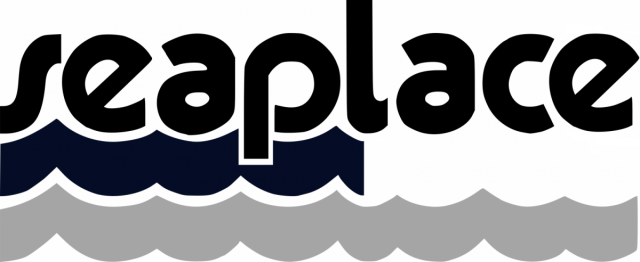Event Information |
|
Pitchers |
 Bares Project is an innovative plan to create a new paradigm for meteo-oceanographic data, to change the nowadays lack of data that holds back the potential of the whole maritime field. We have developed a latest technology inertial wave sensor that, along with an innovative business plan will make possible long-time monitoring, sustainable nets of stations, both coastal and off-shore, and high-quality data to feed the models and forecasting that will shape a new, more precise and safe way to work in the ocean. With an interdisciplinary team with decades of experience both in the IT and maritime fields, we combine our knowledges to solve the long-lasting problems that the environmental oceanographic monitoring faces from the past.
Bares Project is an innovative plan to create a new paradigm for meteo-oceanographic data, to change the nowadays lack of data that holds back the potential of the whole maritime field. We have developed a latest technology inertial wave sensor that, along with an innovative business plan will make possible long-time monitoring, sustainable nets of stations, both coastal and off-shore, and high-quality data to feed the models and forecasting that will shape a new, more precise and safe way to work in the ocean. With an interdisciplinary team with decades of experience both in the IT and maritime fields, we combine our knowledges to solve the long-lasting problems that the environmental oceanographic monitoring faces from the past.
 bound4blue has designed a rigid wingsail system to reduce fuel consumption and the environmental impact of maritime sector. It brings fuel savings up to 40% (and associated emissions reduction) with payback period under 5 years, offering a complete solution to the industry challenges in both existing and new vessels. Our sustainable solution has been very welcome by potential customers and, as a result, we are going to integrate our system into our first two customers ́vessels by in 2019 (contracts signed): a 20 m wingsail in a fishing vessel and a second wingsail in a merchant vessel.
bound4blue has designed a rigid wingsail system to reduce fuel consumption and the environmental impact of maritime sector. It brings fuel savings up to 40% (and associated emissions reduction) with payback period under 5 years, offering a complete solution to the industry challenges in both existing and new vessels. Our sustainable solution has been very welcome by potential customers and, as a result, we are going to integrate our system into our first two customers ́vessels by in 2019 (contracts signed): a 20 m wingsail in a fishing vessel and a second wingsail in a merchant vessel.
 HYCOGEN, the Hybrid Compact Electrical Generator, has developed a new and totally disruptive electric power generating system, based on an integration of new and proprietary technologies of hydrogen and PEM fuel cell, that includes: a) A new conception of high-efficient and low-cost fuel cell (called ULPHE-PEM Fuel Cells); and b) A new hydrogen generation process “in situ” and on demand (called METALIQ), obtained by splitting the water molecule with inorganic compounds, which do not produce contaminating residues or greenhouse gases and which has a power density at least 4 times higher than batteries of high capacity. HYCOGEN provides a high-tech solution both for the propulsion and auxiliaries of marine manned or unmanned vehicles, as well as providing connectivity shore to ship and / or as portable or distributed electric generation, especially in isolated places.
HYCOGEN, the Hybrid Compact Electrical Generator, has developed a new and totally disruptive electric power generating system, based on an integration of new and proprietary technologies of hydrogen and PEM fuel cell, that includes: a) A new conception of high-efficient and low-cost fuel cell (called ULPHE-PEM Fuel Cells); and b) A new hydrogen generation process “in situ” and on demand (called METALIQ), obtained by splitting the water molecule with inorganic compounds, which do not produce contaminating residues or greenhouse gases and which has a power density at least 4 times higher than batteries of high capacity. HYCOGEN provides a high-tech solution both for the propulsion and auxiliaries of marine manned or unmanned vehicles, as well as providing connectivity shore to ship and / or as portable or distributed electric generation, especially in isolated places.
![]() Facing the global warming and energy transition stakes, NEOLINE’s mission is to develop clean and efficient maritime transport services, fully adapted to meet its shippers needs. Founded in 2015 by a group of shipping professionals, NEOLINE will become the first industrial shipowner centered around sustainability. Our pilot-project consists in setting-up by 2020 a new transatlantic service, operated by two 136m length ro-ro cargo vessels, specialized in oversized cargoes and using sails as a main propulsion system. These innovative vessels will be able to save 80% to 90% of fuel consumption, thanks to their adapted commercial speed, more than 4000 m² of sails and an optimized hybrid auxiliary propulsion. At the horizon 2030, our ambition is to go even further by offering large-scale zero-emission services capable to answer to a maximum of transport needs. Currently within shipyard tender call process, NEOLINE is currently seeking for investors before starting the building of its two pilot vessels.
Facing the global warming and energy transition stakes, NEOLINE’s mission is to develop clean and efficient maritime transport services, fully adapted to meet its shippers needs. Founded in 2015 by a group of shipping professionals, NEOLINE will become the first industrial shipowner centered around sustainability. Our pilot-project consists in setting-up by 2020 a new transatlantic service, operated by two 136m length ro-ro cargo vessels, specialized in oversized cargoes and using sails as a main propulsion system. These innovative vessels will be able to save 80% to 90% of fuel consumption, thanks to their adapted commercial speed, more than 4000 m² of sails and an optimized hybrid auxiliary propulsion. At the horizon 2030, our ambition is to go even further by offering large-scale zero-emission services capable to answer to a maximum of transport needs. Currently within shipyard tender call process, NEOLINE is currently seeking for investors before starting the building of its two pilot vessels.
 Building on the success of its SR2000 floating tidal turbine test programme, Scotrenewables Tidal Power’s SR2-2000 project involves the fabrication of an optimised commercial production unit that would be supplied to a consented, revenue supported 2MW project in Orkney, Scotland, delivering first commercial revenues to the company and providing the basis for the company’s first commercial sales. The SR2-2000 project would optimise the technology for low cost production, installation and maintenance. Key differentiators of both the project and company are as follows: a) Turbines are mounted to a highly accessible, towable floating platform; b) All generating unit systems are highly accessible for onsite maintenance; c) All installation and maintenance operations can be executed with low cost workboat or fast crew transfer vessels minimise vessel costs, maximising generator uptime; d) The floating technology supports rotor placement in the upper part of the water column where tidal currents are fastest, optimising energy extraction, particularly versus competing bottom mounted concepts; and e) The project delivery team are amongst the most experienced in the sector. The company has invested more than £32m in its R&D programme, testing its technology at more than 10 increasing scales. The technology has been demonstrated to full commercial scale, with a 2 MW full scale prototype delivering more than 3,000 MWh between August 2017 and August 2018 at the European Marine Energy Centre, Scotland. Evidencing the paradigm shifting nature of the technology and capability of the delivery team, this is more electricity than had been generated by the combined total of more than 30 previous generator test and demonstration programmes at the European Marine Energy Centre in the 12 years prior to its launch.
Building on the success of its SR2000 floating tidal turbine test programme, Scotrenewables Tidal Power’s SR2-2000 project involves the fabrication of an optimised commercial production unit that would be supplied to a consented, revenue supported 2MW project in Orkney, Scotland, delivering first commercial revenues to the company and providing the basis for the company’s first commercial sales. The SR2-2000 project would optimise the technology for low cost production, installation and maintenance. Key differentiators of both the project and company are as follows: a) Turbines are mounted to a highly accessible, towable floating platform; b) All generating unit systems are highly accessible for onsite maintenance; c) All installation and maintenance operations can be executed with low cost workboat or fast crew transfer vessels minimise vessel costs, maximising generator uptime; d) The floating technology supports rotor placement in the upper part of the water column where tidal currents are fastest, optimising energy extraction, particularly versus competing bottom mounted concepts; and e) The project delivery team are amongst the most experienced in the sector. The company has invested more than £32m in its R&D programme, testing its technology at more than 10 increasing scales. The technology has been demonstrated to full commercial scale, with a 2 MW full scale prototype delivering more than 3,000 MWh between August 2017 and August 2018 at the European Marine Energy Centre, Scotland. Evidencing the paradigm shifting nature of the technology and capability of the delivery team, this is more electricity than had been generated by the combined total of more than 30 previous generator test and demonstration programmes at the European Marine Energy Centre in the 12 years prior to its launch.
 We have developed a prototype of a marine current turbine that is specifically designed to harness the energy from tidal and ocean currents in those regions which, having relatively-high-speed water flows (2 m/s or more), cannot ensure an economic exploitation with fixed turbines (i.e., sea depths of more than 60 m or variable seabed depths and turbine heights). Pentland Firth or the Strait of Florida are among the targeted locations. We will deliver the most cost-efficient solution for these regions, a sturdy and easy to maintain solution, while we keep minimum the environmental impact. The product is a 750 ekW turbine within a buoyant diffuser, fully submerged by means of our TLP mooring, which greatly reduces the vertical and horizontal displacements. It is combined with Magnomatics’ PDD generator, a permanent magnet generator that includes an electromagnetic gear inside.
We have developed a prototype of a marine current turbine that is specifically designed to harness the energy from tidal and ocean currents in those regions which, having relatively-high-speed water flows (2 m/s or more), cannot ensure an economic exploitation with fixed turbines (i.e., sea depths of more than 60 m or variable seabed depths and turbine heights). Pentland Firth or the Strait of Florida are among the targeted locations. We will deliver the most cost-efficient solution for these regions, a sturdy and easy to maintain solution, while we keep minimum the environmental impact. The product is a 750 ekW turbine within a buoyant diffuser, fully submerged by means of our TLP mooring, which greatly reduces the vertical and horizontal displacements. It is combined with Magnomatics’ PDD generator, a permanent magnet generator that includes an electromagnetic gear inside.
